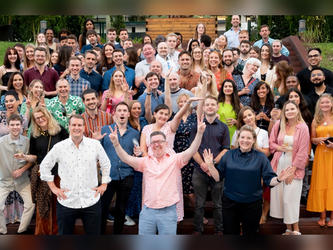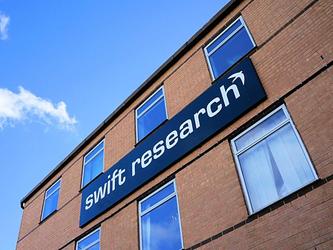In the hands of employees
For years, the John Lewis Partnership (JLP) has been the go-to example whenever a company eschewing the traditional capitalist business model is cited. As the largest – and best known – company owned by its employees, it has long been heralded as proof that a large business can thrive without the scrutiny of the stock market, venture capitalists or founding directors.
JLP has, for a long time, cut a lonely figure for industrial democracy, but that is starting to change. Over the past couple of years, some other large businesses have chosen to adopt this alternative model as they plan for their future, including Richer Sounds, Aardman Animations and Riverford Organics.
The appeal of an alternative structure reached the market research sector at the start of the year, when BritainThinks announced it was moving to an employee trust model.
So why the attraction for employee ownership (EO)? The Employee Ownership Association (EOA) points to specific benefits – employees tend to be more entrepreneurial and committed when they are co-owners of a business. This can lead to a more profitable and sustainable company, as well as help to retain talent and boost recruitment.
Another crucial factor made handing ownership to employees a more appealing proposition however, and that was the government establishing the Employee Ownership Trust (EOT).
Graeme Nuttall is a tax and structuring partner at law firm FieldFisher, which advises on EO. He also led the independent review into EO in 2012 for the Department for Business, Innovation and Skills.
Before the Nuttall Review, governments had only promoted employee shares as an add-on to the traditional business model, another form of financial incentive; but being able to hold employee shares in an EOT was the catalyst for a new business model.
“The EOT contains various safeguards to ensure EO is genuine, and there are two nudges in the tax system to give that final incentive to look at the idea. The first is there’s a complete exemption from capital gains tax for individuals selling a controlling interest in an EOT; the second is that once the EOT holds the controlling interest, it may pay bonuses to all employees up to £3,600 each tax year, free of income tax but not National Insurance contributions,” says Nuttall.
Structural decisions
Setting up an EO structure can be simple and straightforward. The key is to “make some careful, upfront design decisions that will stand you in good stead over the years to come,” says Nuttall. “The main decision is to choose between whether to have trust ownership or direct ownership of shares, or a mix of the two. The simplest route is trust ownership, where shares are held on behalf of employees but not directly by employees. This makes it easier for people joining and leaving the company.”
EO is particularly popular for businesses where the owners are looking for a succession plan. “EO can work in start-up and turnaround situations, but all the growth since 2014 has been in succession situations,” says Nuttall.
Ben Shimshon is one of BritainThinks’ three founding partners, along with Viki Cooke and Deborah Mattinson. He says deciding to move to EO wasn’t so much about succession planning as retaining the agency’s culture.
“There are no plans for anyone to leave the business or retire, but it’s definitely the case that the strategic future is held across broader shoulders than just Deborah, Viki and I.
“We set it up in 2010 and it’s grown to almost 50 people. We felt very happy that we had built this and responsible for what we’d created, but the future will be much more shared among everyone who works here. The value of the company resides in its people, and the quality of people we’ve attracted and retained, so it feels right,” he says.
Maintaining the culture
While many similar-sized market research agencies are being bought up, BritainThinks took this alternative route. Shimshon says: “It was a way for us to realise some of the value that we’d created as founders, without compromising in terms of culture. We’d talked about and considered trade sales, and had some offers at various points. Every time, the stumbling block was what it would mean for the culture of the company; this way meant we could realise some value but maintain the culture and independence.”
However, realising the value from the business through EO is not a quick process. Nuttall says: “Essentially, the money comes from the profits of the business. In some cases, the employees may be prepared to invest, but generally it’s the company that’s got to generate the money. Even with a bit of bank finance, it’s still going to take a few years, possibly as many as 10 years, to pay the owner in full.”
Shimshon says setting up the EOT was relatively straightforward – helped by the fact that BritainThinks’ structure wasn’t complicated in the first place.
“The key aspects were reaching a valuation, agreeing how much to transfer, and finding a chair and independent trustees to run the trust.
“In the short term, the EOT has taken ownership of 60% of the shares of the company, a controlling interest, bought as an upfront consideration of cash in the business and a deferred consideration that will pay out over a few years.”
Moving to EO doesn’t rule out the business being sold, although it’s more generally used when the owners want the business to remain independent.
Shimshon says: “We’re not ruling [a sale] out, and we think that with the right partner that’s a really attractive future for the company and a way to create new opportunities for growth. But in the conversations we’ve had about it, each case so far, we’ve been worried about the cultural impact.”
How easy it is for an employee-owned business to be bought depends on the ownership structure. If the original owners want it to remain independent, they may build in defences against takeover, such as needing 90% of the employees to support a sale.
But EOTs are not the only way of giving employees equity. Market research agency Opinium has given a total of 33% of its equity to individual employees – at all levels of seniority – over the past 10 years. Its aim is that this will eventually reach 50%.
Its CEO, James Endersby, explains: “To build a successful agency, you have to put your people at the heart of everything you do. There are hundreds of ways we do this, but ownership is the ultimate cherry on the top, and we wanted our people to be able to own a share of their success story. We are more than 50 people now, have had 11 years of double-digit growth, ever-rising levels of employee wellbeing, and hold three ‘best place to work’ awards.”
Employees must have worked there for at least two years to be considered for partnership but, beyond that, it’s “purely based on their contribution to the growth of our agency, be that through their outstanding contribution to client work, operations, agency wellbeing, project work, business development or marketing”.
Opinium releases equity based on a profit and growth formula. “The more we all grow the agency, the more equity we can release to reward existing and future partners,” says Endersby. “In terms of set-up, it can actually be simpler than setting up a limited business that has shares to administer and an employee share scheme.”
For Nuttall, whether EO is suitable for your business or not comes down to two questions – is it right for the existing owners, and is it right for the business?
“You need an owner who is prepared to wait to be paid in full for their shares – and someone prepared to let go – and a business that can continue to grow without the owner’s input.”
This article was first published in the April 2020 issue of Impact.

We hope you enjoyed this article.
Research Live is published by MRS.
The Market Research Society (MRS) exists to promote and protect the research sector, showcasing how research delivers impact for businesses and government.
Members of MRS enjoy many benefits including tailoured policy guidance, discounts on training and conferences, and access to member-only content.
For example, there's an archive of winning case studies from over a decade of MRS Awards.
Find out more about the benefits of joining MRS here.














0 Comments